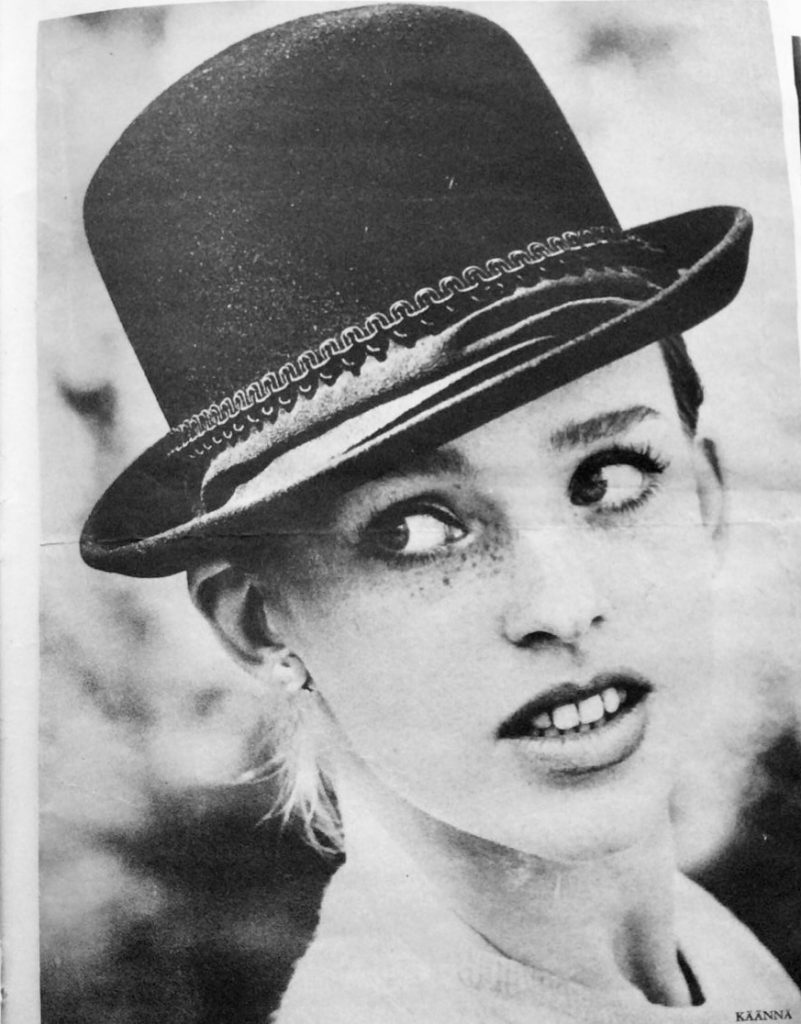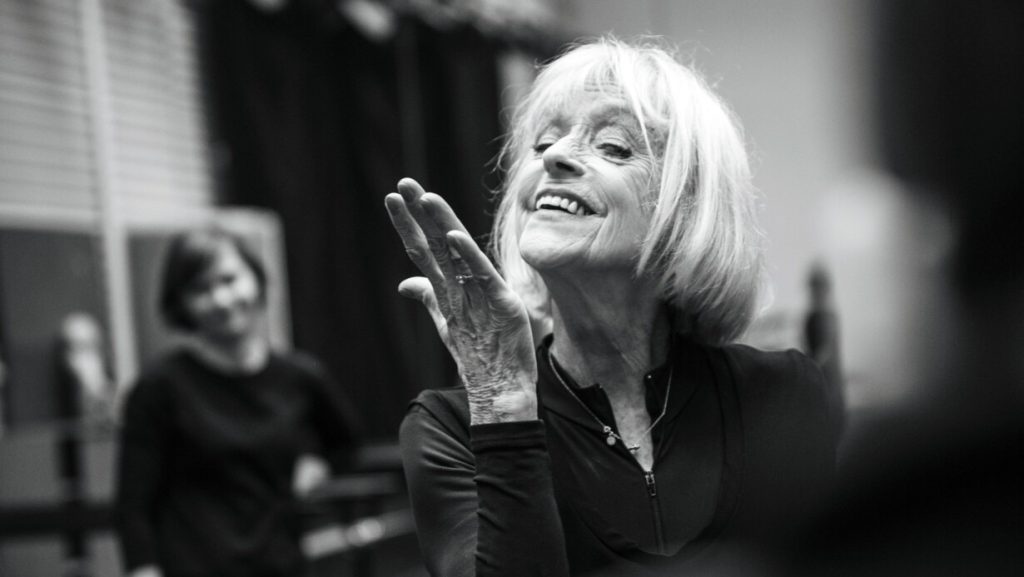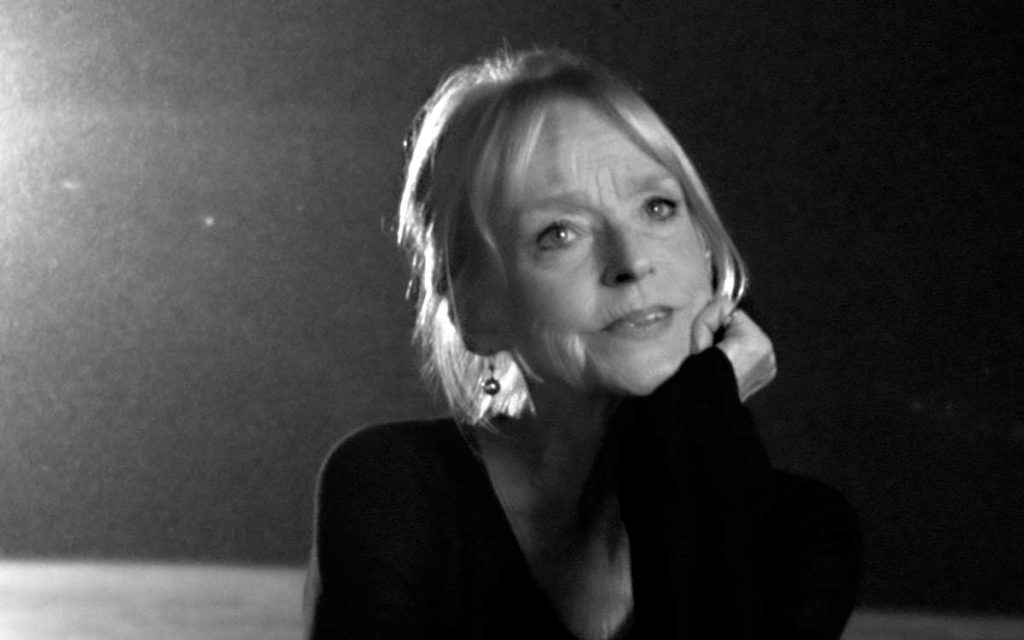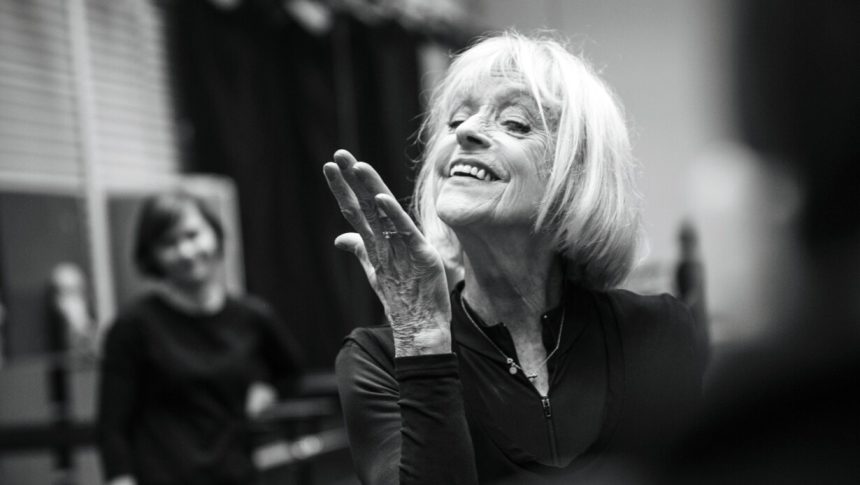
M.M: When did your coaching career start?
S.E: I think it started before I stopped dancing. My curiosity for people, characters has always been with me. I saw lot of theater and films as an inspiration for my inner imagination.
My dancing career stopped early, because of health reasons. After a long period, I realized how curious I was about the artistic side of dancing.
So, before I started anything, there was always the three Stanislavsky questions:
Who are you? Where are you going? And why?
And you start thinking, who is this person?
Who is Mercedes for example? What is her background? What kind of person is she? Where is she going? She’s going to a party because she is in love, and here comes to third question: Why is she going there?
Because she’s in love with the male who’s not in love with her. And then
it just starts coming by itself.
M.M: Have you ever thought when you were a dancer, that you ended up here being an incredible coach or it just happened, as you mentioned, because of a situation you were at some point in your career?
S.E: When I was a dancer, I thought I would probably die when I was around 30. I never thought there was a life after.
M.M: What was the element drawing you to the acting side in the dance world, and what was the element that brought you to this chapter?
S.E: I think I could see very early after stop dancing, that every dancer had huge potential and it was not used.
And, that all the coaching was physical. And I thought, often these things start working when you use your vision and imagination. Suddenly there is physicality because your imagination starts.
I could see that in everybody , that there was so much potential, but it was not used.
And I get bored by just watching physical. I get so bored!
M.M: One of the greatest gifts that you have is seeing through each dancer individually and forming this bound of trust with them. You help them in this way, and they feel they can open in a very safe and creative space. How do you build this?
S.E: I guess life has taught me so much about mistrust and not seeing people as who they are and where they can grow.
That’s my responsibility! I know that if there’s not trust in a room, I can’t ask anybody to open themselves. I believe I love people, the best in people, and I don’t like the worst even if sometimes I’m worse too.
Maybe we all are to a certain extent, and meanwhile we all have the choice of who we want to be each day.
M.M: How do you cope with the situation when you’re given a part that you don’t find so inspiring?
S.E: I think I get so stubborn when I should coach something which doesn’t inspire me, that I don’t give up. I start thinking around every possibility and the people I have met and seen.
Then, because I refuse to give up, I think the following: in a society, we are so many different people, and some people are maybe irritating, or there’s nothing coming out, but those people are there too.
So, somehow I have tried to find this character and say, “Who could this be? What went wrong?” And then suddenly I feel that I find a little opening.
M.M: Since school or early training everybody is thriving for the big roles. There is nothing wrong with that, as we should aim for the best. But then, by only looking in this direction you might end up with the mentality that the other roles , the secondary or the smaller ones, are not so important. And then you enter the area :
“I have been casted for a secondary / smaller part. Probably I am not good enough for the big parts”
S:E: That’s why I would like to be a small role instructor.
I find it so interesting to make a small role important.
It starts with “Who you are?”. The discussions about that, and then diving into physicality. How does this person walk , laugh etc.
And if you think of people who have power, how do they act, how do they talk?
Of course, it can easily become stereotypes. . But if you allow your body to tell you more details, maybe something with the neck or maybe there is a little vulnerability in the chest, or throw an eyebrow there, find a detail, maybe a foot, something, anything! The body is so rich!
M.M: When you were on stage and you had a given role, which were the steps that you followed to bring it to life?
S.E: I think when I was young and I was dancing, if something worked, it was completely unconscious. It has worked because of my excitement ,music, of longing and sadness. It was not much coaching.
There was one woman called Irja Koskinen. She was my coach for my first lead role in “Scaramouche”. She explained to me the difference between wanting to have something or unconsciously longing for something. “The wanting” is more material and the longing is more
unconscious and comes from a deeper place. Like an instinct. She was a wise woman and I trusted her. Those few comments from her being so young, stayed with me for the rest of my life. Ballet is so physically demanding so we don’t have time to remind ourselves that it is an art form.

M.M: I have had the opportunity to witness your artistry in the studio and to work with you in some moments which I found truly inspiring. You helped me take the dance to another level. No matter the part, you helped me in finding meaning for each step or gesture even if they were not part of a story ballet. It felt like opening my head and offering me so many new perspectives from where I could approach the part. In those moments the fear that I must have felt, or the insecurities simply faded away.
Felt like a switch in the brain.
How can you explain that? Is it a part that we should develop or think about it? Is it about the psychological side of creation? Is it about learning how to trick or train the brain in stressful moments?
S.E: I think that when you start trusting your imagination and then listening to what music is telling you.
Then you don’t start thinking how it looks like, because you are so focused on how it feels. And I think when you are dancing you feel something, no matter what the stories are, even abstract.
In this way you connect with the public immediately, making them feel at the same time with you.
So, it’s a win-win situation. If you feel something, you already switch the focus which was directed only to the physical side.
M.M: With other words, connecting with your true self.
S.E: Yes.
M.M: A part of the beauty of your work is that you help people, and you lead them to get to a role through themselves.You are not putting any conditions or pressure when you work with someone. You let things flow naturally and organic.
S.E: It’s a little bit like having a garden. I don’t have a garden, I actually never had. There are different flowers in a garden, and they bloom at the tempo they should. I’m not going to interfere. I am just giving them good life conditions.

M.M: When you work first time with someone, what do you look for in that dancer?
S.E: I try to feel who she or he is and maybe even more where they are in that moment. What and where is their life situation.
Because most of all, dancing is about life. For me it is important to hear what the dancer thinks about the part. And then start following that path with both of our ideas.
In happiness and great beauty there is often sadness.
There is day and night and there is dark and light. We need them both.
M.M: You’re an immense source of inspiration for many generations of dancers, like an ocean from where we can just take a little drop and we feel better. A magic water fountain of beauty and inspiration.
Where do you get your inspiration from?
S.E: I get my inspiration from the dancers and from life.
Sometimes when I see a dancer who is in a difficult place, I see that the dancer is frozen. Then I get different pictures in my head of what it could be. I don’t know from where it comes but I think it’s again a huge care and my love for dancers, especially for those ones who are not the stars and can fly on their own.
So, I think it is the care. And the love. I want to make everybody bloom in their own way! The sky is full of millions of stars, so everybody is a star!
That is where/ how it comes from!

M.M: We live in very intriguing and changing times. How can we keep some of the most classical roles still alive today?
S.E: I think you always must try to put the role inside your own imagination.
How is this young girl in this ballet? Are there any similarities in our days?
Because I think there always will be people learning to love, there will always be sadness in losing people.
The ways to show it then were different. So, I think we need to understand that and take the essence from people put into 1800. Yeah, because it’s often not so far away.
I do believe that the human conditions for all generations on emotional levels are quite similar.
If your emotions come from an honest place in yourself, that is the most valuable thing you can come with.
If it is just brilliant from a physical perspective, I may just think “When can I leave? “
M.M: How can a dancer improve their acting side?
S.E: Well, first, I think that every ballet education should have creativity hand in hand with improvisation, doing different parts with the same soul and with different emotions. You need to know who this person is. I think when you, as a dancer, figure it out, then it becomes a different solo, only by using your imagination of “who I am“ and it doesn’t necessarily always take a lifetime.
Trying to be perfect kills art.
Life is not perfect; art is not perfect. But is ART.
M.M: How important is for a dancer to study a part through their own lenses rather than just taking it for granted?
How important is the work that you must put into becoming that role/ that person?
S.E: I think it’s very important! I also know that people have different methods.
First, they must take it seriously. For some people it helps a lot to dive in the literature around it. For some people it disturbs because it’s so literal.
So, you need to know a little bit of the story and then you start feeling/feeding your own energy.
The big problem today is that there is less and less time for ballet. So, I’m thinking that maybe for us to survive we need to change our mindset: when we go on stage, we must be perfect.
On the other hand, my mind feels a little protest the necessity of speed and effectiveness in creating arts.
Maybe to thrive when we go on stage, we might not be there just yet, but just on our way and try to connect with the audience by simply being there. : ”I don’t quite know what’s going to happen , but it is fresh and authentic”.
Because everybody has an imagination. We are born with it, and we don’t use it.
M.M: I had that great opportunity of seeing you perform Madge in “ La Sylphide”. It is an iconic role that has your signature and you have performed it both here at Royal Danish Ballet and abroad. Could you tell me a bitt about it?
S.E: When my journey with Madge started there were no discussions about who this woman was. I was told : ”You come in from left 5,6,7,8 and you sit down 9,10,11,12”.
I understood that the inner work I had to do by myself. So, my very first witch was a complete physical inspiration from my step mother who probably was the meanest, real witch that I ever had met.
I walked like her; my mouth was like hers my hands were like hers. It was unconsciously because I started to think , “who walks like this? “ It was my stepmother….so unconsciously. And just like that it became more and more like her.

M.M: At what age did Madge come to you?
S.E: I can’t remember, I think I was 34-35. And then, because I was incredibly lucky to have this great part in such a long time, I tried to wash the picture completely clean and start from scratch. Because it is so easy to fall into mannerism , when you don’t feel quite the same excitement anymore. So, I started asking myself “ What am I doing?” So, then I went back to scratch. Different sides of a hurt woman’s life started to come into light.
M.M: How do you approach a negative role that is so different than your personality or a role different than yourself in general?
S.E: You can choose people from the history , for example Stalin . How did they become like this? And if you somehow understand that he was once a little boy that was mocked maybe, or insecure, and was slapped and slapped and slapped and then it was suddenly too much, you can’t understand or defend evilness as a dancer. The main thing in doing negative characters is that you must get to like it . And try to understand why they are evil.
M.M: Often the dancers are being put in boxes, roles/parts wise.
Why do you think this happens? Can we talk about a lack of imagination, a lack of trust towards dancers?
S.E: This is a bitt like you’re used seeing a latte given in a certain cup and suddenly one day it comes in a champagne glass. That means latte cannot taste good in such a glass? Why not?
I have seen so many dancers about whom you would think “Oh, she’s the typical hero of story! ” Well, can she try something else then? As I think there is much more to everyone inside. Everybody has a fan of possibilities.
I think of course, it is good to ask, “Could I please try something I have never tried?” And you can only have a No or a Yes.
No matter how little your part is, if you put everything into it, it will be noticed.
M.M: How about this concept: The small people can only do certain roles, and the tall ones only others. Isn’t that limitation?
S.E: Always! Now, with this new wave of diversity and equality, I hope that the image of the bodies, colors, races it is going to change the idea of all this ballet frames.
Ballet is incredibly old-fashioned! It should move with time. It is classical like classical music, and every generation takes it to a new place, or it should!
I had a story with Henning Kronstam. There was a cast list of “Folk Tale”, and I was casted as “Hilda”. And I said to him that I would love to do the troll, Diderik. And he said : “You can’t because he’s a man. I did not talk about it ever again, and a year after, I was casted for it.
For many years all the witches in “La Sylphide” were played by men, so why can’t a troll be a woman…?
Changes take time.
I guess I hope that the form of classical companies will make changes, from having one leader and 80 dancers. Let’s hope for new ideas from the generations of today and tomorrow.

Sorella Englund
Born in a family of artists from Finland, Sorella Englund is a former principal dancer and character dancer with The Royal Danish Ballet. She writes history in the company by being the very first foreign principal dancer.
She is a valuable ambassador of August Bournonville staging a various number of his ballets in Denmark and abroad. As a ballet master, she worked with famous companies such as: Boston Ballet, Royal Ballet London, Scottish Ballet, National ballet of Canada, Tokyo National Ballet etc.
Today she is an instructor with the Royal Danish Ballet in Copenhagen.
The photos used in this article are from Sorella Englund’s personal archive and by photographer Lars Nyboll.


Leave a Reply